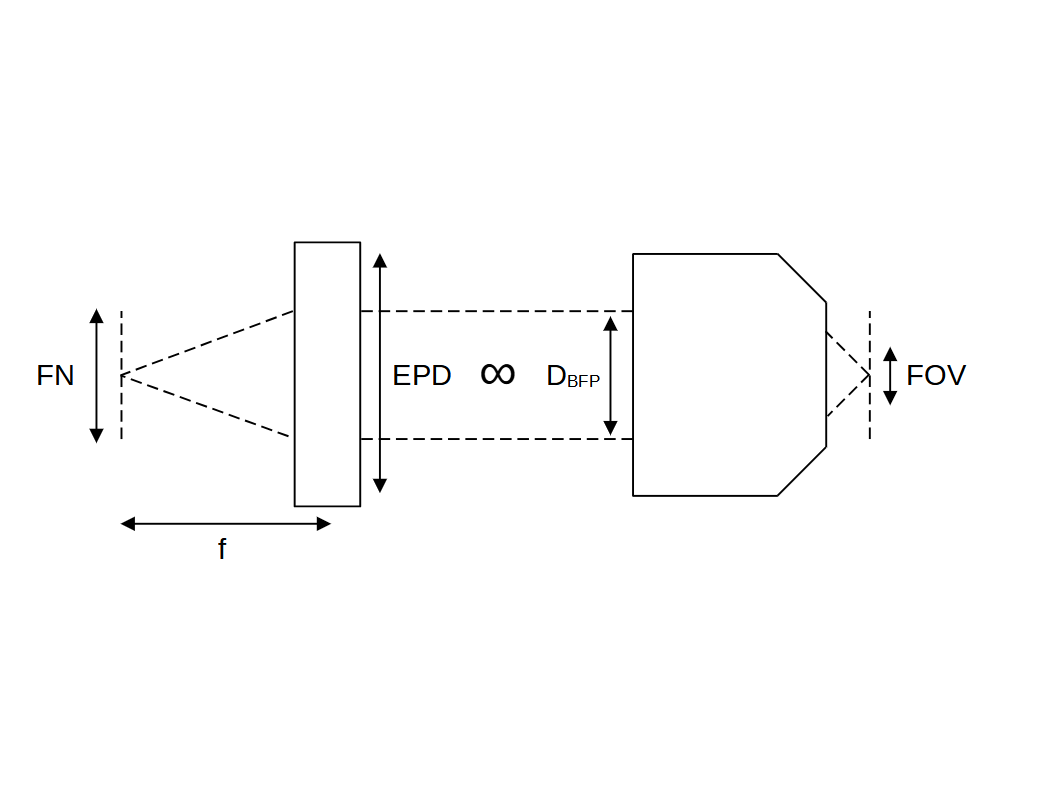Microscope objectives
An introduction to 'infinity' corrected microscope objectives.
ContentsTube Lens
An infinity corrected objective needs an extra lens to form a finite image, often referred to as a 'tube lens'. In principle, any positive lens will work. However, in practice some care should be taken to ensure that the chosen tube lens can accommodate the pupil size (\(D_{BFP}\)) and the field of view (\(FOV\)) that the objective delivers (as well as the wavelength range and any final aberration corrections that may required). A useful reference is the manufacturer recommended tube lens, summarised below for the most popular manufacturers:
| Make | Part # | f (mm) | FN (mm) | EPD (mm) | Lambda (nm) | Inf. correction |
|---|---|---|---|---|---|---|
| Leica | ? | 200 | Partial | |||
| Mitutoyo | MT-1 | 200 | 30 | 24 | 436 - 656 | ? |
| Nikon | MXA20696 | 200 | 26.5 | 32 | 400 - 700 | Full |
| Olympus | SWTLU-C | 180 | 26.5 | 36 | 400 - 700 | Full |
| Zeiss | 425308-0000-000 | 164.5 | 25 | 31.6 | 380 - 700 | Partial |
Here the field number (\(FN\)) is (in theory!) the field of view over which the tube lens (and maybe the objective!) can deliver diffraction limited performance (for a small enough pupil \(D_{BFP}\)). Note that the entrance pupil diameter (\(EPD\)) may cause vignetting (or the tube lens aberrations) for large enough pupils.
